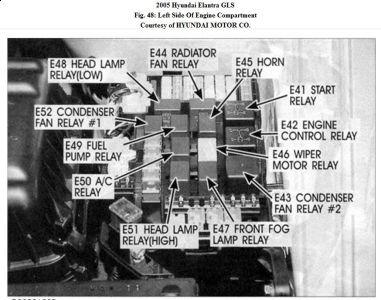Head light bulbs have never been sold in pairs unless some marketing genius is trying to get you to buy more of his product.
A properly-working charging system will keep the electrical system voltage between 13.75 and 14.75 volts to keep the battery fully-charged. If it runs near 13.8 volts, that is very easy on bulbs, and you can expect them to last a long time. If it runs near 14.7 volts, that tiny little bit more voltage translates into a serious increase in brightness and big drop in life expectancy. If you're going through a lot of head light bulbs due to higher system voltage, you'll be going through a lot of other bulbs too, like tail light and brake light bulbs.
Other factors include how often you use the head lights. If you're smart enough to turn your lights on during the day in winter when white snow and gray roads make for great camouflage, and cars are real hard to see, that will shorten the life of the bulbs. If you have daytime running lights, (for people who like to forget to turn their tail lights on), the head light bulbs' life will also be shortened. Common sense would say to use a ten-dollar relay to turn on the low beams, but the engineers have seen fit to use an expensive, unnecessary computer module to turn the high beams on at 80 percent of full brightness. That means the person in front of you is blinded by yellowish high beam head lights glaring in their mirrors, but to the bulbs, that still translates to decreased bulb life. That's because to run the bulbs at 80 percent, the computer turns them on full brightness for about 95 percent of the time, and fully-off for about 5 percent of the time. That switching on and off occurs around 400 times per second so we don't see it as flicker. Due to the slowly-changing glow of the filaments, we see that as 80 percent of full brightness, but the bulbs see that as being turned fully-on 95 percent of the time.
Basically, three years is not uncommon. The original bulbs in my '88 minivan lasted over 20 years. That also is not totally uncommon. If you go through a lot of bulbs on a regular basis, measure the battery voltage while the engine is running. If it's higher than 14.75 volts, suspect the voltage regulator. If you only burn out a lot of head light bulbs, there's two common things to look for. The biggest cause of repeat failures is touching the glass part of the bulb. Your fingerprint grease will eat through the glass when its hot. New bulbs come with a warning to avoid doing that. The second, less common cause is moisture buildup inside the head light housing. Some manufacturers have service bulletins that describe where and how to drill a small drain hole in the bottom of the housings to prevent that. If you see water sloshing around in the housing, moisture on the backside of the lens, or the old bulb is shattered, suspect the need for a drain hole.
As far as two bulbs burning out at the same time, that is best blamed on coincidence, provided system voltage hasn't recently increased due to a charging system problem. Also, as a point of interest, I've had used bulbs that I've saved from cars I scrapped out. Those always seem to last just a few weeks after they've been sitting on the shelf for a few years. I don't have an explanation for that except that a little air might be sneaking in. That happens with perfectly good tv picture tubes too that have been sitting for years. Those will burn up the air and look good again after a few hours, but air in bulbs will corrode the filaments and cause them to burn out.
Most bulbs do not last nearly as long as they did 20 or 30 years ago, but they typically are brighter now. Life expectancy and brightness are trade-offs. You lose one to gain the other. You might find "longer life" or "increased brightness" splashed on the packaging, but you won't get both.
Saturday, October 10th, 2020 AT 7:21 PM
(Merged)






